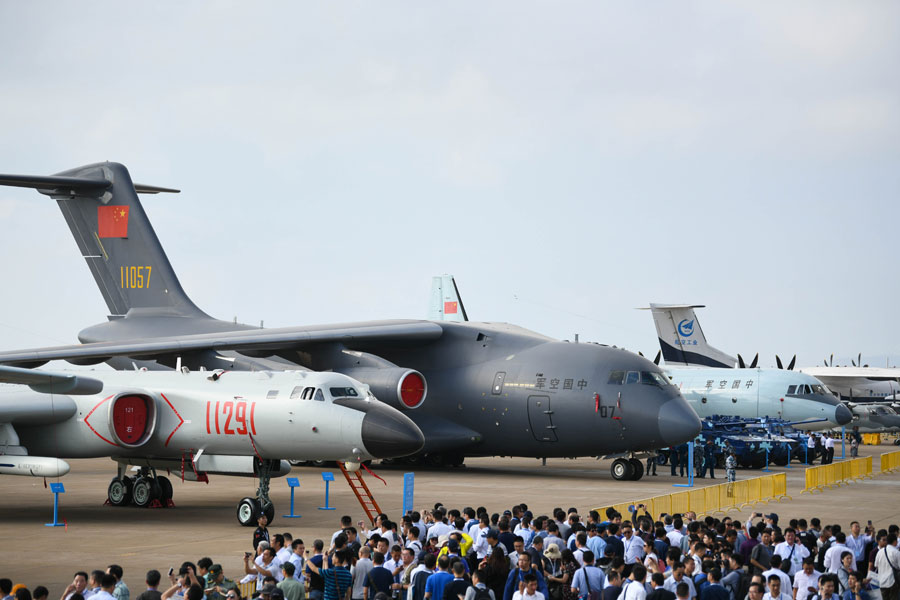Engine technology puts China in global top flight

PLA Air Force planes attract attention on the tarmac. [Photo/Xinhua]
The British Hawker Siddeley Harrier attack aircraft, which had vertical/short takeoff and landing capability, was the first modern military aircraft to adopt thrust vectoring through its Rolls-Royce Pegasus engine. However, the technology was not well-developed in the '60s, and was merely tasked with achieving vertical takeoff and landing.
Starting in the 1990s, major strides were made in research into thrust-vectoring engines. Consequently, the Lockheed Martin F-22 Raptor of the US, the world's first stealth fighter jet, uses a thrust-vectoring turbofan engine that provides supreme maneuverability.
In addition to the F-22, the F-35B of the US, and Russia's Sukhoi Su-30, Su-35 and the latest model, the Su-57, all have thrust-vectoring capability.
China is reported to have been researching and developing thrust-vectoring aircraft engines for nearly two decades.
Pictures circulating on the internet indicate that Chinese engineers built at least one prototype engine at least 15 years ago, but there was no information about any other developments until late December, when details about the maiden flight of a thrust-vectoring-engined J-10B fighter jet were leaked by Chinese aviation enthusiasts. However, there was no official confirmation.
